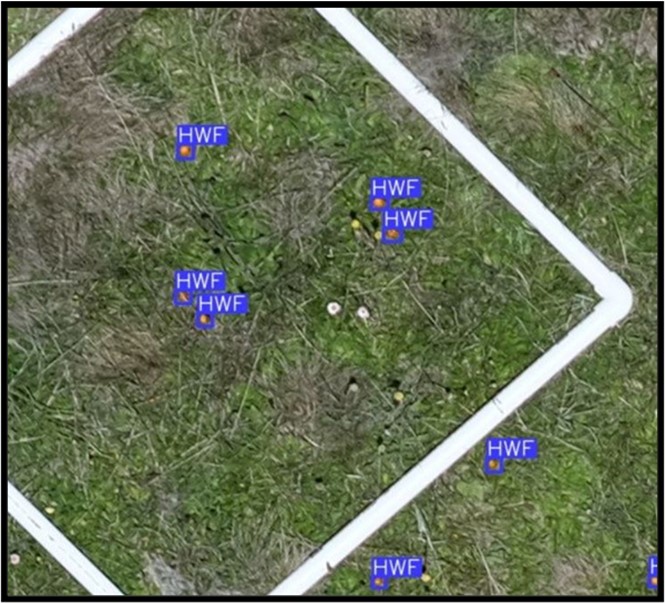The Weed Manager’s Guide To Remote Detection
A key part of any object detection project is developing a robust training dataset. A training dataset is a set of labelled data that is used to train a machine learning model.
In the context of AI-based weed detection, a training dataset would consist of images where the target weed species is manually labelled in each image. As described in the section on “labelling”, these labels typically consist of a boundary box created by the human annotator (normally a weed expert, able to identify the target species from other vegetation) that is used to represent the extent of an object in an image.

Fig 1. An example of an RGB ground quadrat image with known plant species present in the landscape and the target plant identified by the model in blue bounding boxes using object detection (HWF).
The size and quality of the training dataset is important for the accuracy of the object detection model. A larger dataset will generally lead to a more accurate model, but it may also require more time and resources to train the model.
A high-quality dataset will contain images that are well-labelled and representative of the objects that the model will be used to detect. Collaboration between weed experts and data scientists is essential for generating high-quality training datasets.
There are some disadvantages to using CNNs for object detection.
If the images that are being tested are taken under different lighting conditions or from different viewpoints, the CNN may not be able to detect the objects accurately.
Training datasets that contain images collected under a wide range of conditions can help to mitigate this issue. Despite these limitations, CNNs are a powerful tool for object detection and they are being used in a wide variety of applications. As the technology continues to improve, these limitations are likely to be addressed
The following list summarises some important considerations when developing a training dataset: